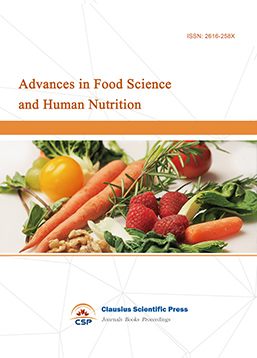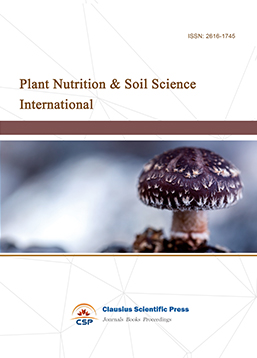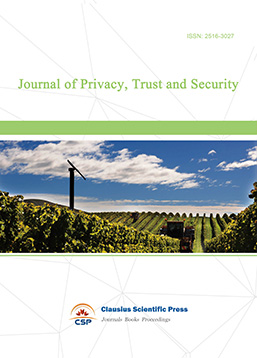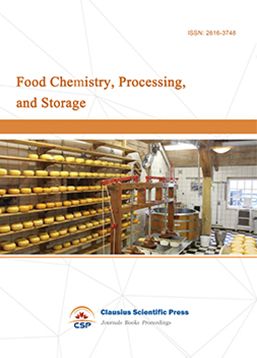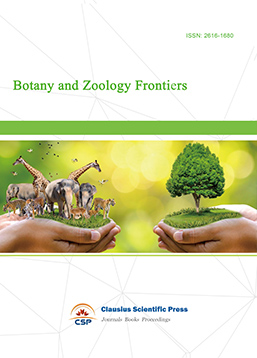Response of CIMMYT Spring Wheat Lines to Saline-Alkali Stress
DOI: 10.23977/jmcs.2023.020108 | Downloads: 9 | Views: 318
Author(s)
Jiaojiao Zhao 1, Sisi Zhao 1, Xuelei Wang 1, Lu Gan 1, Xiaofan Huang 1, Lina Qiu 1, Shuguang Bao 1, Ming Li 1, Xiaodong Xie 1, Gaoyi Cao 1
Affiliation(s)
1 College of Agronomy, Resources and Environment, Tianjin Agricultural University, Tianjin Key Laboratory of Intelligent Breeding of Major Crops, Tianjin, 30039, China
Corresponding Author
Xiaodong XieABSTRACT
In order to explore the physiological and biochemical mechanism of different wheat varieties with salt tolerance and alkali tolerance under salt and alkali stress, 150 mmoL•L-1 NaCl and 100 mmoL•L-1 NaHCO3/Na2CO3(molar ratio 1:1) were used to simulate salt and alkali stress conditions respectively. The growth of wheat in soil was simulated in an artificial climate chamber with temperature 25℃, illumination 16 hours, temperature 22℃ and dark treatment 8 hours. The salt-alkali tolerance of 121 wheat seeds was tested, and the characteristics of salt-alkali tolerance of wheat germplasm resources were analyzed based on 11 traits. The results showed that under salt and alkali stress, 11 index values were significantly different among 121 wheat germplasm resources. Under NaCl stress, the germination rate and germination potential of wheat were lower than that without NaCl stress, and lower under alkali stress. The changes of embryo length, fresh weight and dry weight of embryo were relatively large under alkali stress, the preliminary analysis showed that alkali stress had more effect on the growth and development of wheat than salt stress. Among them all kinds of numerical value assume function relation. There were differences in the correlations among the traits under saline-alkali stress. Select the data relatively complete, there are differences in correlation, the coefficient of variation is relatively large groups of data for analysis.
KEYWORDS
Wheat, Germplasm Resources, Germination, Salinity-Alkali StressCITE THIS PAPER
Jiaojiao Zhao, Sisi Zhao, Xuelei Wang, Lu Gan, Xiaofan Huang, Lina Qiu, Shuguang Bao, Ming Li, Xiaodong Xie, Gaoyi Cao, Response of CIMMYT Spring Wheat Lines to Saline-Alkali Stress. Journal of Modern Crop Science (2023) Vol. 2: 59-68. DOI: http://dx.doi.org/10.23977/jmcs.2023.020108.
REFERENCES
[1] Liu Le, Wei Xiaohui. Effects of salt and alkali stress on seed germination and salt tolerance of bellows and Purple Leaf Bellows, Acta Northeast Forestry University Sinica, 2021,49(09)
[2] Li Hao. Screening of wheat varieties with strong comprehensive stress resistance. Agricultural Technology, 2019, 08.
[3] Wu, J., Tao, R., Zhao, P., Martin, N. F., & Hovakimyan, N. Optimizing Nitrogen Management with Deep Reinforcement Learning and Crop Simulations. In Proceedings of the IEEE/CVF Conference on Computer Vision and Pattern Recognition 2022, (pp. 1712-1720).
[4] Rengasamy, Pichu. Soil processes affecting crop production in salt-affected soils. Functional Plant Biology, 2010, 37(7).
[5] Meng Xia. A brief talk on the main problems of facility soil in our country and their solutions. Water Conservation and ecology, Inner Mongolia Water Conservancy, 2013, (04)
[6] Khadiah Mansour. Agricultural Pollution Visualization under Multilevel Grid. Academic Journal of Environmental Biology (2022), Vol. 3, Issue 3: 9-17.
[7] Gong Zhizhong, Xiong Liming, Shi Huazhong, Yang Shuhua, Herrera-Estrella Luis R, Xu Guohua, Chao Daiyin, Li Jingrui, Wang Pengyun, Qin Feng, Li Jijang, Ding Yanglin, Shi Yiting, Wang Yu, Yang Yongqing, Guo Yan, Zhu Jiankang. Plant abiotic stress response and nutrient use efficiency. Science China. Life sciences, 2020, 63(5).
[8] Qiao Pei, Lu Cunfu, Li Hongmei, etc. Effects of salt stress on seed germination and physiological characteristics of wheat seedlings. Chinese Journal of Ecological Agriculture, 2013, 21(6): 720-727.
[9] Keepesi Igaliba G. Osmotic and salt stress induced alteration in soluble carbohydrate content in wheat seedlings. Crop Sci., 2000(40): 482-487.
[10] Li Yuanyuan, Chen Bo, Yao Lirong et al. 283 wheat varieties (lines) evaluation of salt-alkali tolerance at germination and germplasm screening report of China. Agricultural Science and technology, 2021,23(3) : 25-33
[11] Zhang Ya, Shi Shuqian, Li Yaping. Osmotic Regulation, And Chlorophyll Fluorescence Characteristics in Wheat Leaves under Different Salt Stresses. Journal of Applied Ecology 2021,12(12)
[12] Liu Jia, Guo Shujuan, Zheng Haoyuan et al. Cloning of wheat TaGF14m gene and analysis of its response to salt stress. Journal of wheat crops, 2021-04-25, 1
[13] Li Hongyan, Chen xiangqian, Niu fengjuan. Temporal Transcriptome Analysis Of Wheat Roots In Response To High Salt Stress, Journal of Plant Genetic Resources 2022,23(2) : 592 -604
[14] Feng Zhang, Sui chunying. Effects Of Exogenous Active Substances On Stress Resistance At Seedling Stage Of Wheat. Chinese Journal of Agronomy, 2022,38(9) : 14-19
[15] Shan Yunpeng, Chen Xinhui, Wan Ping, et al. Evaluation of drought resistance of adzuki bean germplasm resources at seedling stage and screening of drought resistance resources. Journal of Plant Genetic Resources 2019, 20(5): 1151-1159.
| Downloads: | 253 |
|---|---|
| Visits: | 13561 |

 Download as PDF
Download as PDF